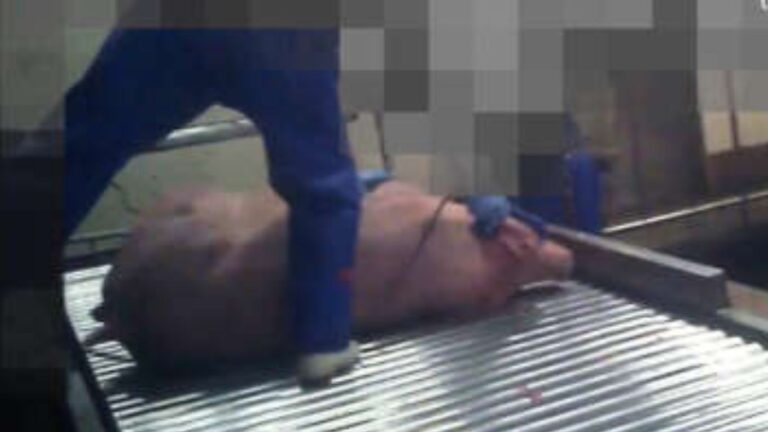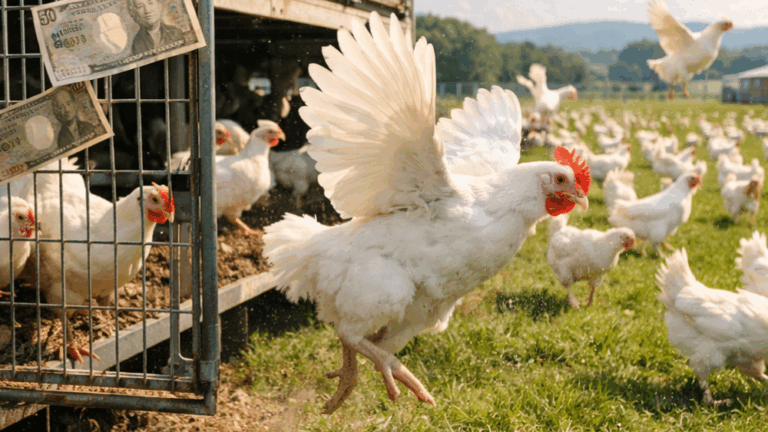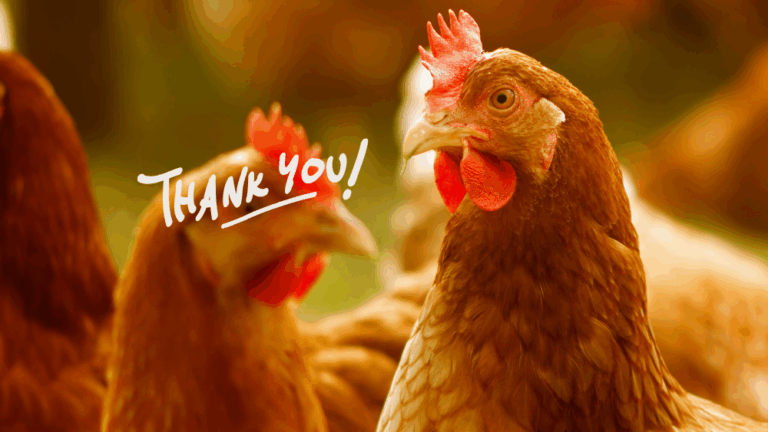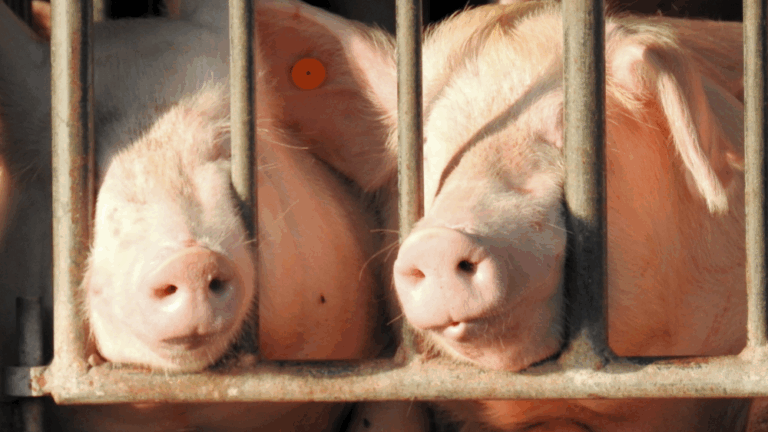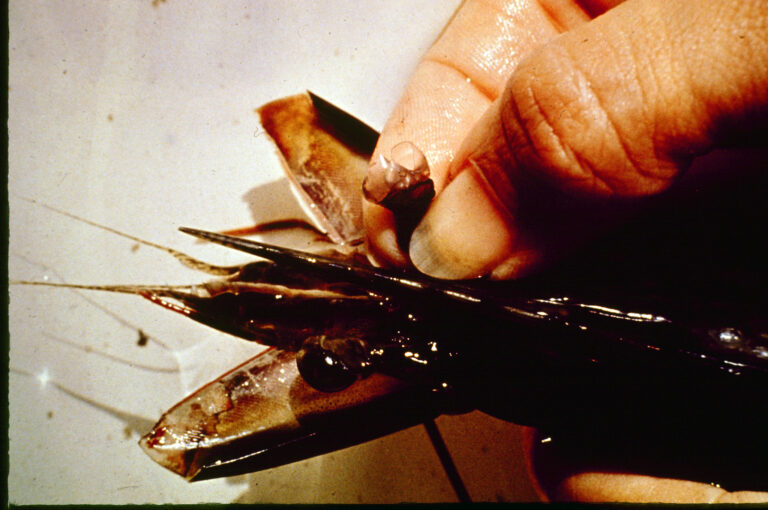In Japan, pigs and cattle are basically stunned at slaughterhouses before being decapitated and bled to death. However, this process is not 100% complete. This is because it fails.
If the fainting process works correctly, the animal will suffer less pain and fear in the final stages. Therefore, efforts to improve the accuracy and reduce the number of failures must always be ongoing. Even one failure from the human point of view is a 100% failure for the animal, and there is no way to recover from it.
This Japanese video is from a very common slaughterhouse. Failures are very common. Some people who have visited slaughterhouses will say “it was done very well” or “there was no failure” based on the moment they saw was as 100% information, while we, as an animal protection organization where information is gathered, hear stories from people sho say such things , and people who say “I saw a failure right in front of me and the pig stood up.” The people who have the most accurate information are the field employees. They witness failures on a daily basis.
The same is true overseas.
- Even in the best condition slaughterhouses, the success rate of stunning averages 97-98% = 2~3% failure*1
- Inadequate stunnings occurred in 12.5% (16.7% of bulls, 6.5% of other cows) in a UK study, ranging from 19% of the least experienced archers to 5% of the most experienced archers2
- A 2016 study found 12.5% were inadequately stunned, with young bulls being particularly likely to fail, with 16.7% being inadequately stunned*3
- A study between 2000 and 2011 in slaughterhouses in Austria, Germany, and Switzerland found that 28% of cattle were stunned with captive bolt, 12% with electric shock (pen (ESP) 12%, trap (EST) 21%, and automatic restraint (ESR) 31%) in pigs, 12% (ESP) and 13% with CO2 in pigs. Stunning was not done*4
- Insufficient skill in stunning cattle with captive bolt increases the number of animals that do not fall over after the stun shot. Bulls are more likely to fail than females*5
and many other studies have been done and remedies for improvement are being researched.
Constant monitoring, improvement, and awareness are needed.
Temple Grandin, a leading expert on improving animal welfare in slaughterhouses, states that before audits began in 1999, cattle slaughterhouses were poor and the percentage of successful stunned treatments was very low; since audits began, 90% have been successful.
What makes Japan inferior to other countries is the lack of oversight and also the lack of any suggestions for improvement, no discussion, and no data as described above. Given the situation, one can imagine that the failure rate in slaughtering in Japan is higher than in other countries.
Most people would prefer to turn a blind eye to slaughtering. Some may even say it doesn’t matter because they do not eat meat. However, if we look away, the situation will never change and the animals will continue to suffer. About 1 billion animals continue to be slaughtered or killed every year in Japan. Please do not turn a blind eye to the suffering of these animals. We need to turn our eyes and be prepared to discuss the issue. It is all of us, the people and the producers themselves.
Only by accurately grasping, analyzing, and discussing the actual situation, and by raising the awareness of all people in the field, will the suffering of animals be reduced.
*1 https://www.grandin.com/references/maintain.good.standards.auditing.html
*2 Gregory N. Anatomical and physiological principles relevant to handling, stunning and killing red meat species. Proc Int Training Workshop Welfare Standards Concerning the Stunning and Killing of Animals in Slaughterhouses or for Disease Control, September 26–29 2006 Bristol. Available from: Humane Slaughter Association, The Old School, Brewhouse Hill, Wheathampstead, Hertfordshire, AL4 8AN, UK
*3 Assessment of Cattle and Pig Welfare at Stunning in Commercial Abattoirs, Sophie Atkinson
*4 https://www.researchgate.net/publication/263264458_Identifying_reasons_for_stun_failures_in_slaughterhouses_for_cattle_and_pigs_A_field_study
*5 https://www.researchgate.net/publication/350851111_The_effect_of_slaughtering_skills_on_the_welfare_of_cattle_during_stunning_with_a_captive_bolt


